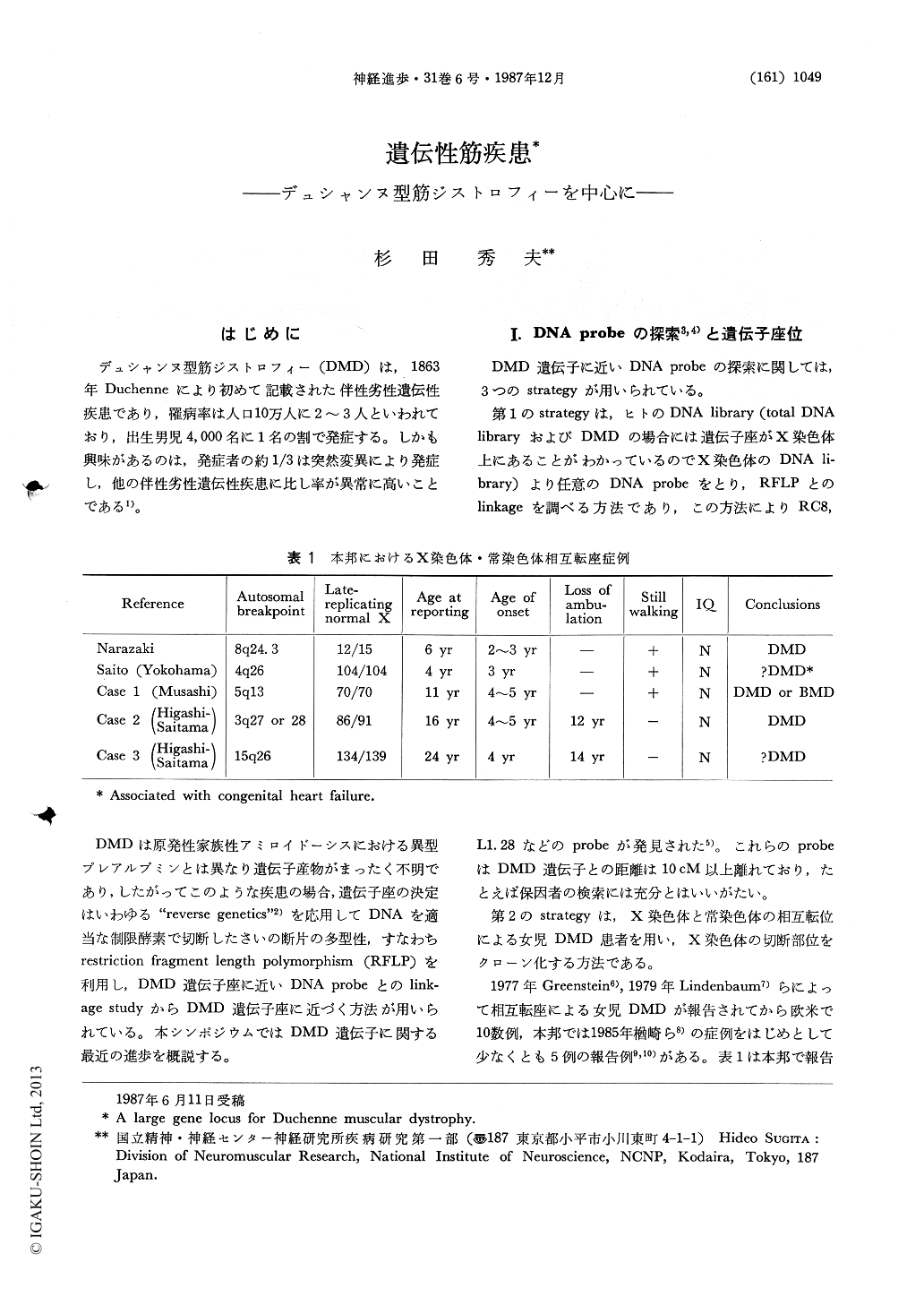Japanese
English
- 有料閲覧
- Abstract 文献概要
- 1ページ目 Look Inside
はじめに
デュシャンヌ型筋ジストロフィー(DMD)は,1863年Duchenneにより初めて記載された伴性劣性遺伝性疾患であり,罹病率は人口10万人に2〜3人といわれており,出生男児4,000名に1名の割で発症する。しかも興味があるのは,発症者の約1/3は突然変異により発症し,他の伴性劣性遺伝性疾患に比し率が異常に高いことである1)。
DMDは原発性家族性アミロイドーシスにおける異型プレアルブミンとは異なり遺伝子産物がまったく不明であり,したがってこのような疾患の場合,遺伝子座の決定はいわゆる"reverse genetics"2)を応用してDNAを適当な制限酵素で切断したさいの断片の多型性,すなわちrestriction fragment length polymorphism(RFLP)を利用し,DMD遺伝子座に近いDNA probeとのlinkage studyからDMD遺伝子座に近づく方法が用いられている。本シンポジウムではDMD遺伝子に関する最近の進歩を概説する。
Duchenne muscular dystrophy (DMD) is the progressive muscle wasting disease inherited as X-linked recessive trait, but about one third of cases appear as new mutation which is higher than any other X-linked genetic diseases.
In DMD the application of "reverse genetics" could access to the isolation of the responsible gene. There are rare cases of DMD in girls who have been found to be heterogenous for balanced X; autosome translocations. In all cases so far reported, the breakpoint has been at Xp21, whereas the autosome involved was different ineach case. In these females, it is assumed thatthe translocation disrupts the DMD gene on theXchromosQme and that the diseasc phenotyperesults from the preferential inactivation of thenormal X chromosome. The band Xp210n theshort arm of the X chromosome has been pin-pointed as the site of DMD gene locus.

Copyright © 1987, Igaku-Shoin Ltd. All rights reserved.


